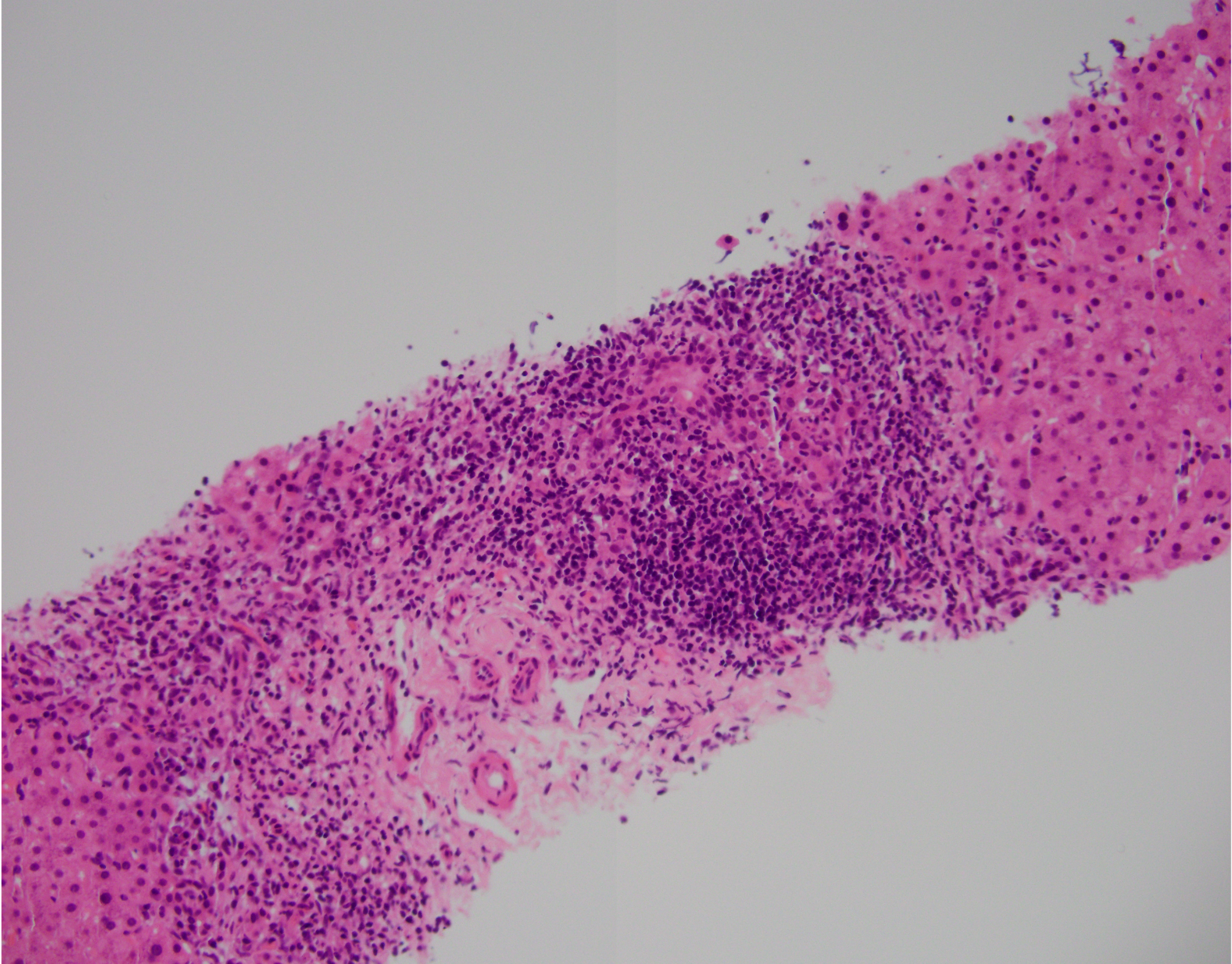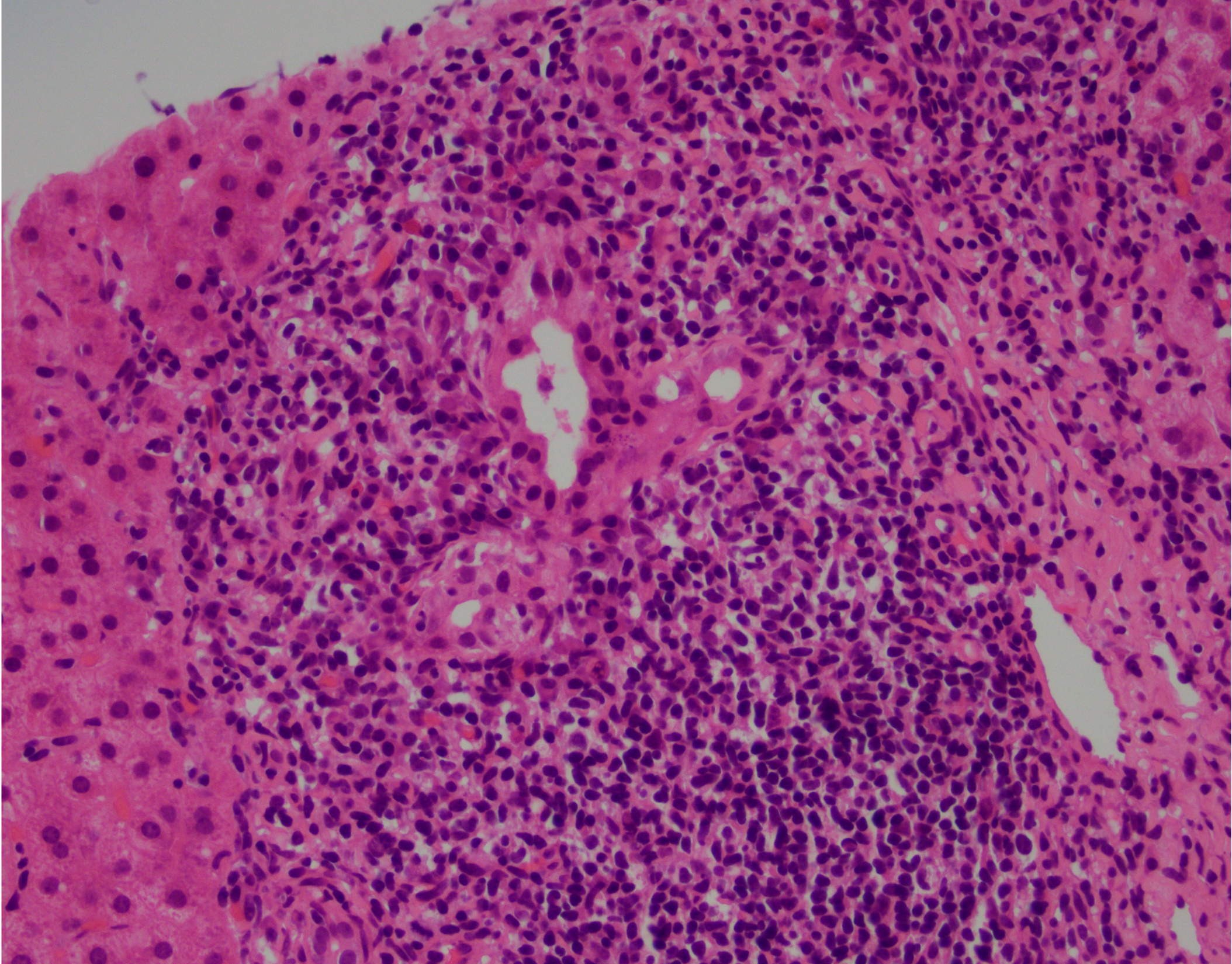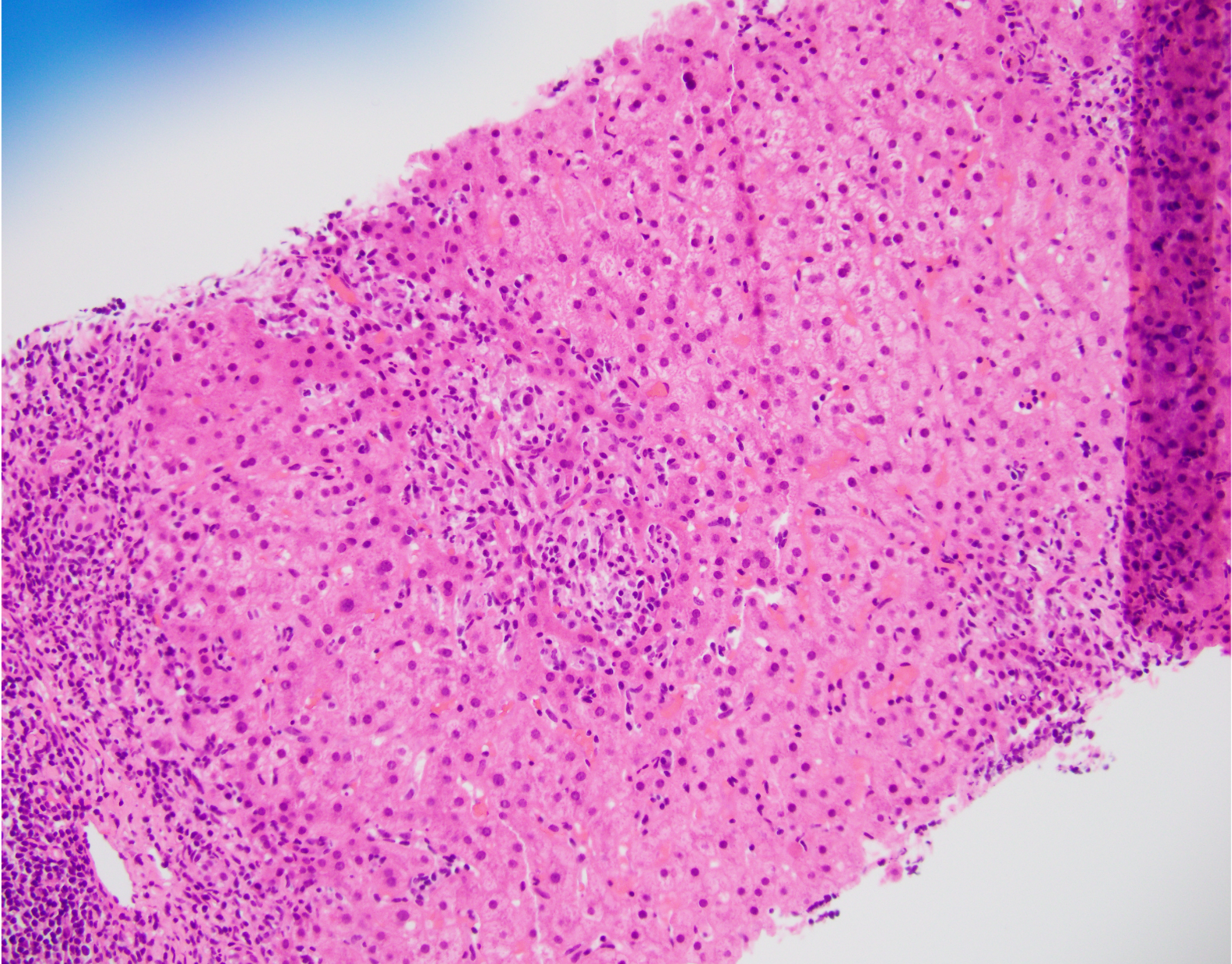Case History
A 45-year old female is incidentally found to have increased liver function enzymes. A liver biopsy is performed.
What is the most likely diagnosis?
A. Primary sclerosing cholangitis
B. Primary biliary cholangitis
C. Autoimmune hepatitis
D. Acute viral hepatitis



Answer: Primary biliary cholangitis (PBC)
The biopsy shows a portal based disease with patchy moderate portal inflammation consisting of lymphocytes and plasma cells with some neutrophils and eosinophils with mild interface activity. There is inflammation and destruction of the medium-sized bile ducts (septal bile ducts). The bile ducts are targeted by immune-mediated destruction and show reactive changes and loose granulomatous inflammatory response. The constellation of injured duct associated with loose granulomatous inflammation is called a florid duct lesion, which are seen in about 50% of biopsies with PBC. Florid duct lesions have high specificity for the diagnosis of PBC, however you can still diagnose PBC without florid duct lesion if there is portal based inflammation with cholestatic injury.
Contributed by Christine Pesoli, M.D., GI Pathology Fellow, UAB Pathology